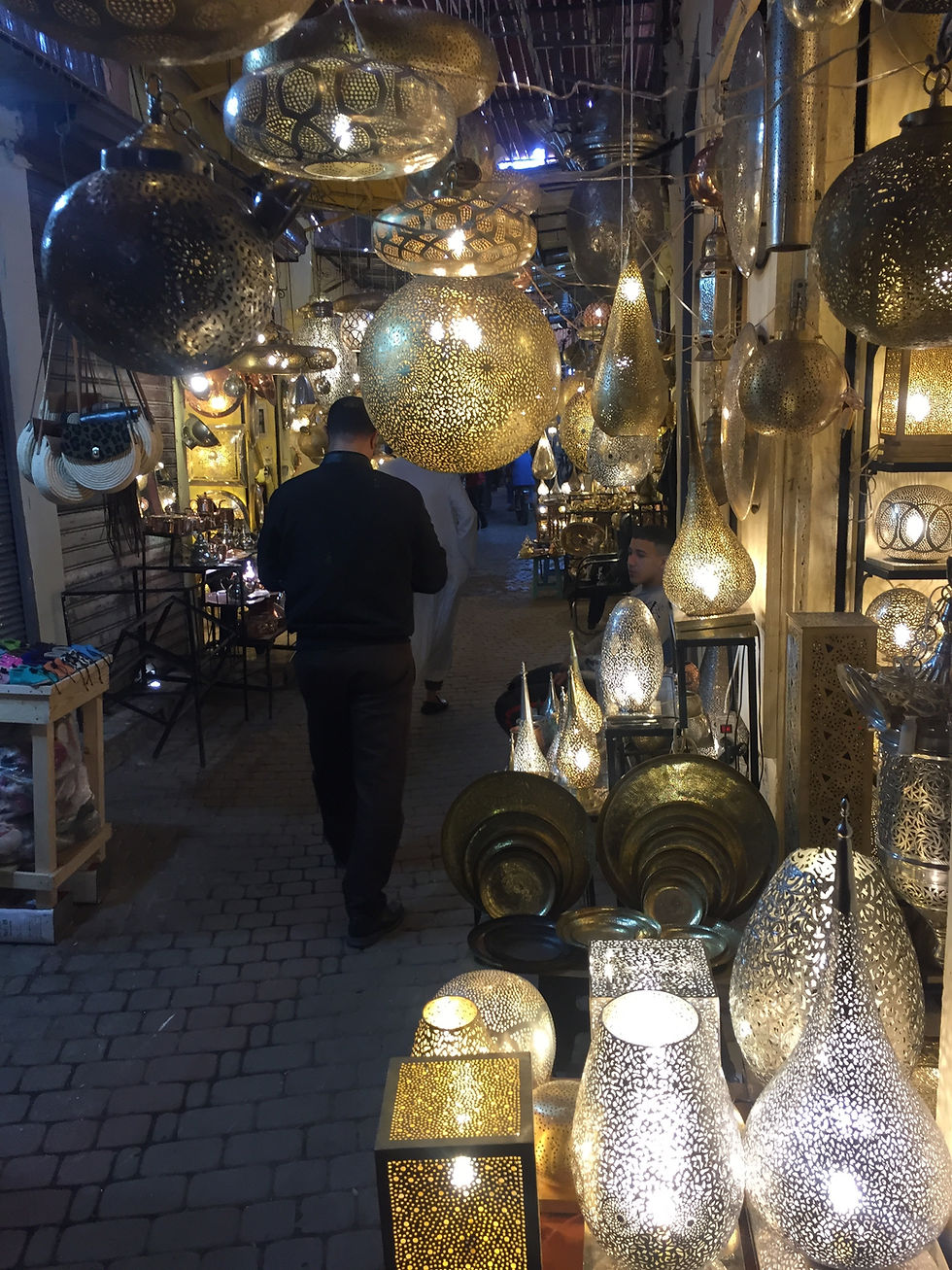Marrakesh Express
- mcohe7
- May 11, 2019
- 1 min read
Marrakesh historically has had great importance for Morocco. It is primarily a Berber city at a very strategic location in the south of the country. Now it's the 4th largest city. With its long history (founded in 1062) there are many buildings and monuments that attest to its illustrious past. Its leaders have been the Almoravids first, then the Almohads, and Saadians. This of course was followed by the Europeans.
The Almoravids were nomads who came from the south and converted to Islam in the 9th century. They continued north through Morocco and into Spain creating an empire that extended to Barcelona. This is the time that Spain became Al Andalusia and the Andalusian style took hold. The empire began to shrink and the Almoravids stayed further north loosing most of their control in Morocco. By the beginning of the 12th century the Almohads who were also Berber from the High Atlas began to take control. They controlled Marrakesh and Fes. This was a more intellectual dynasty that extended into southern Spain. Great thinkers like Averroes and Maimonides were active in southern Spain and northern Morocco. Once the Almohads lost control of the Saharan trade routes their empire declined but not before they created beautiful works of art.
Finally the Saadian dynasty rebelled against Christian and European encroachment and the Ottoman empire. Like the others their influence waned and the complexities of rulers and succession in Morocco gets very complicated.
In a short visit to Marrakesh a sense of the importance and beauty of this city can be sensed though much is in disrepair and in need of restoration.





















Comments